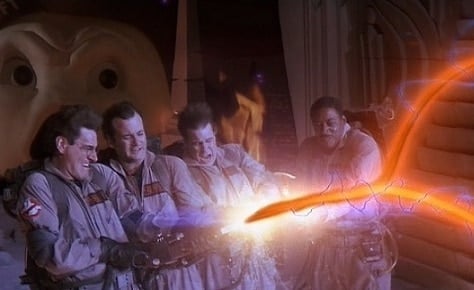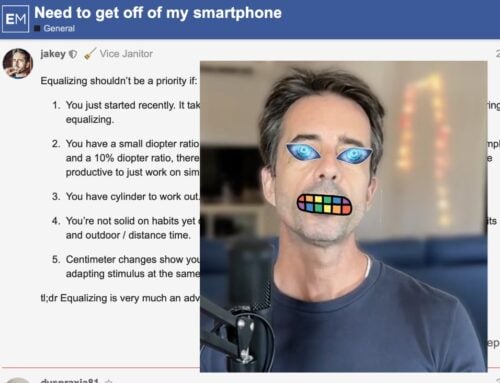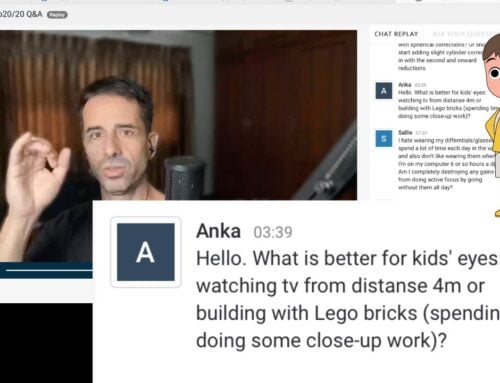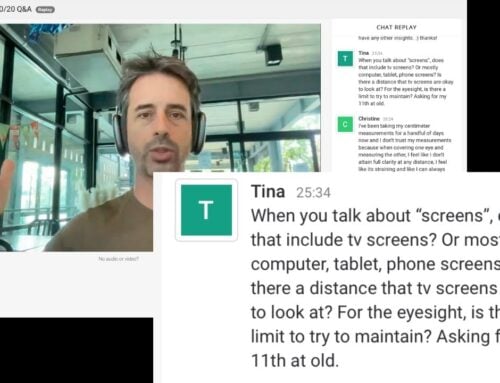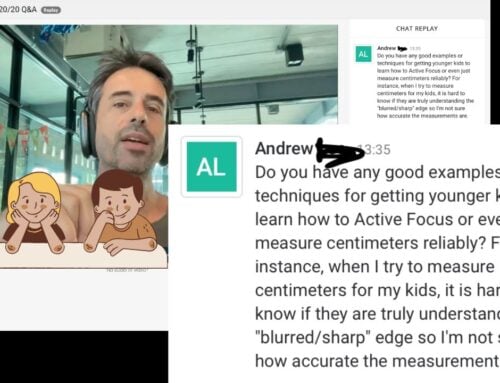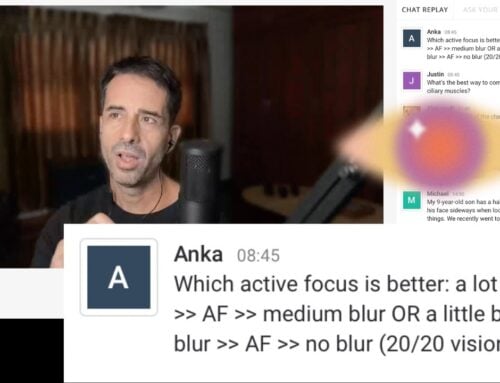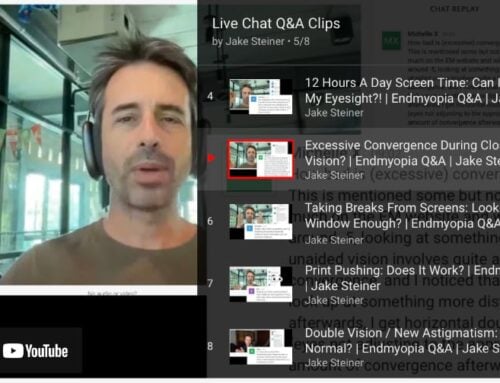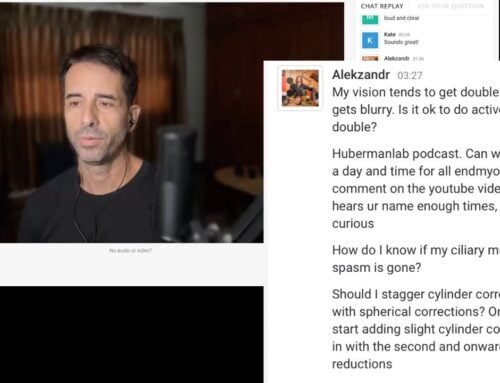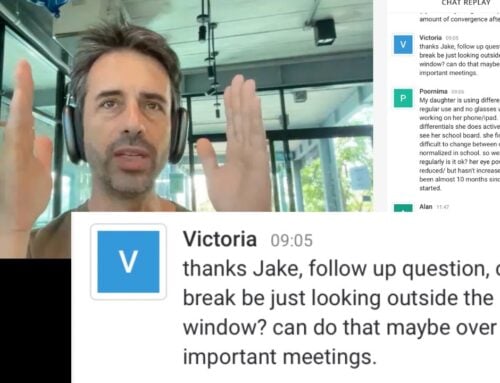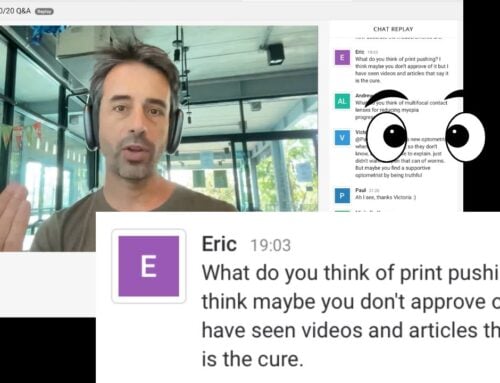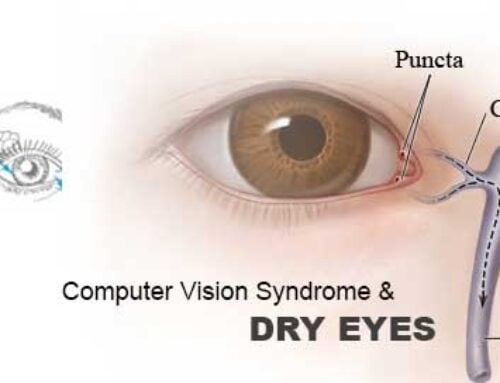Roy posts in the forum:
So I started my next reduction
Right: -7.0 -> -6.5
Left: -7.5 -> -7.0I just started yesterday and notice that my left eye gets the flash of clear vision more easily than my right eye.
My snellen results are (if I check my vision in optimal light and pull focus for a good minute)
Right: 20/30
Left: 20/25Is that normal for one eye is pull focus faster? I felt like my right eye pulled focus much better previously but in the last few weeks it’s the opposite. I’m wondering if my left eye is improving faster than the right. I think I should use -6.75 for both eyes, but for contact lens at this level, they only come in increments of 0.5. Thanks again for all your help!
This happens quite a lot, and is exactly how it should be.
Also note, quite cool. Half diopter reduction and Roy’s getting 20/25 and 20/30. Very nice.
Roy also has a driving related question, which I hesitate to post here. Always, seriously, use appropriate correction for driving. If your local laws say 20/40, then make sure you get at least 20/40 on the Snellen with your normalized. And if that subjectively doesn’t feel good enough, then be smart, use more correction. This, not CYA talk. Always be safe, and respect the safety of others.
Why might you need more correction for driving than a state required 20/40? Remember the role of dynamic visual acuity, which assumes a significant rule once you’re in motion, rather than looking at a static environment.
That out of the way, let’s get to Roy’s question about driving:
Also, I feel more frustrated seeing out of my right eye when driving whereas left eye is not as bad due to difficulty reading signs… any suggestions (should I wear a strong prescription for the right while driving)?
I’m posting it here because of the second part of his question, changing the correction for a single eye. Now as always, I’m not giving prescription advice here. This is just the misty guru talking on a mountain top, philosophizing about the theories of diopters.
Here, my theoretical musing:
As for driving just use your previous prescription when necessary, don’t start changing the diopter ratio between left and right eye. In general for situations where you either have low light or a lot of motion and your reduced prescription doesn’t feel safe, just use the previous, higher prescription.
The key part here is, don’t start changing diopter ratio.
That’s just about never a good idea.
The only time you want to change the ratio between left and right eye is when you are doing as part of a reduction, in line with your overall visual requirements, across all of your lens use. In fact we work a lot towards this, maintaining the ratio for both close-up and distance glasses. In addition we work on equalizing left and right eye (in due time), and simplify the type of focal plane correction we create with lenses.
You don’t want to change the ratio temporarily, just for a single use case like Roy brings up. Doing so will confuse the processor of the visual signal, your visual cortex. It’s not designed for this kind of change (think about it: in nature and in the uncorrected eye such a focal plane change never happens). As a result you’re likely to get all sorts of adverse results, as your brain will stress about the sudden perceived visual signal error.
Otherwise when done correctly, reducing prescription complexity (things like different astigmatism corrections for left and right eye, with disparate cylinder and axis, as well as spherical differences), is an important part of getting your eyes back in order.
And remember … if you’re a casual reader, don’t start monkeying around with your prescription. First step always is to learn and fully understand the impact of focal plane changes. Casual prescription changes are like casual sky diving, perhaps not entirely wise. ;-)
Want more? Make it all the way through my e-mail intro guide, be rewarded with an invite to BackTo20/20 (and full access to thousands more forum Q&A and discussion).
Cheers,
-Jake

